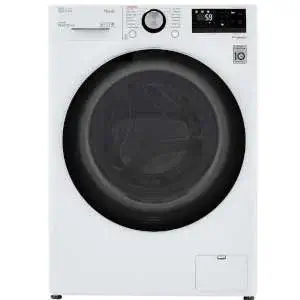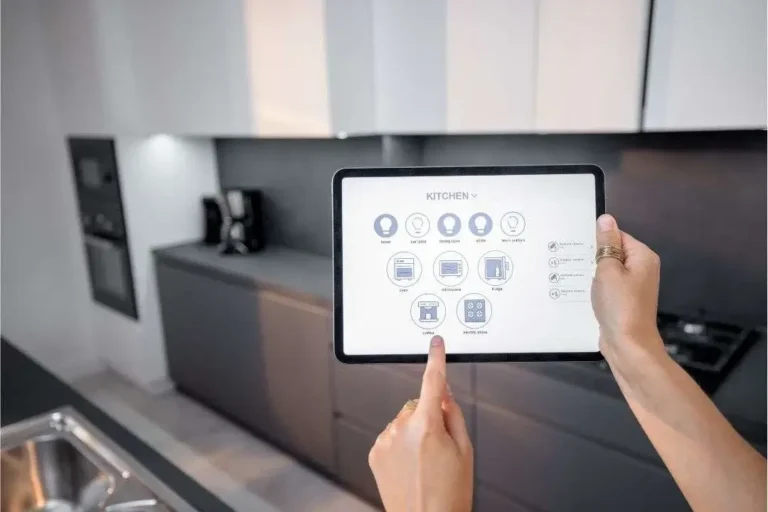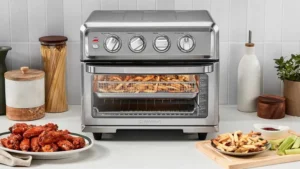One of the most important decisions you can make is choosing the right appliances for your home and needs. The right machine will make your life easier, help you save on energy bills, and give your kitchen or laundry room a fresh new look.
But with so many brands, features, and technologies out there, how do you know which appliances are right for you?
In this complete appliance buying guide, you’ll learn how to choose appliances that match your needs, lifestyle, space, and budget. From energy-efficient appliances to the latest in smart home technology, we’ll walk you through everything you should consider before making your purchase.
Let’s dive into how to buy appliances the smart way—so you can make confident, long-lasting decisions for your home.
Identify your needs and priorities

When it comes to finding the best appliances for home use, the first and most important step is to identify your needs and priorities. To get started, ask yourself these four essential questions.:
What is your primary goal?
As every buying guide for appliances will tell you, the first step—before you even start browsing appliance categories—is to think about what really matters to you in a new appliance.
Are you trying to cut down on energy bills with a more energy-efficient household device? Do you need something bigger to handle your growing family’s needs? Or maybe you’re into smart home appliances and want all the latest tech features?
Figuring out your top priorities is a key step in learning how to choose appliances that actually make sense for your home and lifestyle. If saving money on utilities is your main goal, look for Energy Star-certified appliances or models with inverter technology—they’re designed to use less energy and help you save over time. On the other hand, if you love convenience and staying connected, smart appliances that work with your phone or voice assistant are a great option.
Save $1,300 on the Bespoke AI Laundry Combo

- The incredibly smart Bespoke AI Laundry Combo washer/dryer is selling for a whopping $1,300 off on Samsung.com. This machine is worth every penny, boasting a plethora of AI features, including fabric and soil sensing, as well as an auto-dispense system. Don't miss out!"
For example, let’s say you’re in the market for a new washing machine. If you have a big family and do laundry multiple times a week, a large-capacity washer like Samsung‘s Bespoke AI Laundry Combo is a great choice. This bad boy boasts a 5.3-cubic-foot capacity, is Energy Star-certified, doubles as a dryer, and is incredibly fast—its Super Speed wash-and-dry function finishes in just 98 minutes. And we definitely would’ve put it in the top spot if this were a dedicated washer and dryer buying guide.
But if you live by yourself, a small smart washer like the LG WM3555HWA is a top choice. It’s powerful, doesn’t take up much space, utilizes AI, and you can even start and stop cycles directly from your phone.
In the end, the best appliances for your needs are the ones that match your day-to-day routine. Knowing what you’re looking for helps you avoid overspending and makes the whole appliance-buying process a lot smoother.
Save $179 on the LG WM3555HWA

- Amazon is offering a sweet 12% discount on the LG WM3555HWA, letting you snag it for $179 off. This compact washer packs smart features and serious speed. Don’t miss out!
How often will you use the appliance?
One of the most practical tips in any appliance buying guide is to consider how often you’ll use each appliance. Usage frequency plays a key role in determining the type of appliance you need and the features that will matter most.
If you’re shopping for major home appliances that you’ll use every day—such as a refrigerator, washing machine, or dishwasher—it makes sense to prioritize durability, performance, and energy efficiency. These are the workhorses of your home, so you’ll want something reliable that can handle regular wear and tear without constant maintenance.
Conversely, for appliances you’ll only use occasionally—like a wine cooler, countertop oven, or portable ice maker—you might want to focus on affordability, compact design, and ease of storage. You probably don’t need all the latest smart appliance features or high-end finishes—just something that gets the job done when needed.
Save $29 on the GE GCST10A1WSS

- Snag the GE GCST10A1WSS 4-in-1 Microwave Oven for 13% off on Amazon. With 1,050 watts of power and a built-in Air Fry feature, it allows you to cook crunchy, healthier spins on your favorite comfort foods—quickly and effortlessly. Act fast and save now!
Taking appliance usage into account helps you narrow down your options and avoid overspending on features you won’t use. It’s one of the most practical steps in learning how to choose the right appliances for your home and making sure your purchase truly fits your lifestyle.
As you explore how to pick the right appliance, don’t forget to compare warranty options and read user reviews to ensure you’re getting long-term value—whether you’re buying something for daily use or just the occasional task.
Are there any space limitations?
One of the most practical—yet often overlooked—factors when choosing new appliances is ensuring they fit your space. Before getting too excited about a stylish new fridge or high-tech washer-dryer combo, take a step back and measure your available space carefully.
Be sure to record the width, height, and depth of the area, and don’t forget to factor in a little extra room for things like ventilation and door clearance. Appliances need enough space around them to operate efficiently and safely—especially items like refrigerators, ovens, and dryers that generate heat or require airflow. If a door can’t swing open fully, it might be frustrating to use on a daily basis.
And here’s something many people forget during the appliance buying process: how will the appliance actually get into your home? Measure all access points, including doorways, hallways, staircases, and corners, to ensure your new machine can reach its final destination without a hitch.
Save 35% on the Cuisinart TOA-70 Toaster Oven

- Get the Cuisinart TOA-70 countertop oven for only $149.99 on Amazon and score sweet savings of $80. This oven is compact, yet spacious on the inside. It features eight programs, including air frying, broiling, baking, grilling, and warming. It offers great value for its current price, so act fast and get one now!
Another practical tip is to sketch out the dimensions or use painter’s tape to mark the appliance’s footprint on the floor. This is especially important when choosing appliances for small spaces like compact kitchens, apartments, or laundry closets, where every inch counts.
If you’re working with limited space, compact appliances or space-saving models might be the smarter choice. These are designed to deliver excellent performance while fitting comfortably into tighter areas.
Overall, taking the time to measure everything before buying helps you avoid frustration, delays, and potential return fees. It’s a simple but essential part of how to choose appliances that truly suit your home—and your lifestyle.
Do you want smart features?
Another important question to ask yourself when deciding how to choose new appliances is whether or not you want smart features. These days, many modern appliances come loaded with functionalities that can make your daily routine easier, more efficient, and even more enjoyable.
From Wi-Fi connectivity and app-based controls to remote diagnostics and voice assistant integration, smart appliances are designed to help you stay connected and in control—even when you’re not at home. Imagine preheating your oven on your way back from work, starting a load of laundry from your phone, or getting an alert when your fridge door has been left open too long. These kinds of features can add real convenience to busy lifestyles.
Smart appliances also offer benefits when it comes to energy efficiency and maintenance. Many models track usage patterns and energy consumption, helping you make smarter choices that can reduce your utility bills. Some can even send maintenance reminders or self-diagnose issues—so you know exactly when to clean a filter or call for a repair before it becomes a bigger problem.
On the other hand, appliances with smart features often come with a higher price tag. So, if you’re not particularly tech-savvy or simply prefer straightforward, easy-to-use devices, you might not need all the bells and whistles. In that case, opting for a non-smart appliance could be the better—and more budget-friendly—choice. After all, why pay for features you’ll never use?
Ultimately, understanding whether smart functionality truly matters to you is an important part of choosing the right appliances for your lifestyle. If convenience, control, and connectivity are at the top of your wish list, smart appliances can be a worthwhile investment. But if not, there are still plenty of reliable, high-performing appliances out there that keep things simple and effective—no app required.
Set a realistic budget

Before purchasing new appliances, it’s essential to establish a realistic budget that considers both upfront costs and long-term expenses. As any good appliance buying guide will tell you, pricing can vary widely depending on the brand, features, and energy efficiency, so understanding general price ranges will help you make informed and smart decisions.
Estimated Price Ranges for Common Appliances:
Refrigerators: $500 – $3,000+ (Higher-end models with smart connectivity and customizable storage can exceed $5,000.)
Washing Machines: $400 – $1,500 (Front-load models and high-efficiency units may reach $2,000.)
Dishwashers: $300 – $1,200 (Advanced models with smart controls, extra racks, and improved drying options can go up to $3,000.)
Ovens/Ranges: $500 – $2,500+ (Premium dual ovens, induction ranges, and models with built-in air fryers may cost $3,000 or more.)
Microwaves: $100 – $600 (While most countertop models stay under $600, built-in or convection microwaves can exceed $2,000.)
Additional Costs to Factor In:
When going for new appliance shopping, don’t forget to account for hidden costs beyond the base price that may affect your final total:
Delivery & Installation: Some retailers offer free delivery, but installation for gas ranges, built-in ovens, and dishwashers might require professional setup.
Extended Warranties: While standard manufacturer warranties are helpful, extended coverage can provide long-term protection against costly repairs.
Electrical & Plumbing Upgrades: If you’re replacing older appliances, check whether your home needs additional electrical wiring, plumbing modifications, or ventilation upgrades.
Energy Costs: Investing in energy-efficient models may cost more upfront but could lead to significant savings on electricity and water bills over time.
Smart Features & Connectivity: If you want remote controls, app-based monitoring, or voice command compatibility, expect to pay extra for advanced technology.
Where to Buy: Online vs. In-Store

In addition to how to choose appliances, it’s also important to know where to buy appliances from —online or in-store. Both options offer distinct advantages, and understanding them can help you choose the best machine for your needs.
Buying Online:
Shopping online often means better prices and exclusive deals that might not be available in-store. You can easily compare prices across different retailers, ensuring you get the best deal. Plus, online platforms usually feature customer reviews that offer valuable insight into the appliance’s performance and reliability.
Online shopping also offers convenient delivery options, including free shipping or even same-day delivery. This is perfect if you need your appliance quickly or prefer the convenience of having it delivered directly to your door.
Buying In-Store:
On the flip side, shopping in-store allows you to see and touch the appliance, helping you gauge its size, design, and quality firsthand. You can also test out certain features, like how quiet a washing machine is or how user-friendly an oven’s controls are.
In-store shopping also offers the opportunity to speak with knowledgeable salespeople who can provide personalized recommendations and point out offers or features you might have missed online. Additionally, many in-store retailers offer financing options, delivery deals, and extended warranties, which could be more convenient than buying online.
Important features to look for in new appliances

This wouldn’t have been a proper guide on how to choose appliances if it didn’t list all the important features that the most essential appliances in your home should have. After all, focusing on key features when selecting new appliances can make all the difference in efficiency, performance, and overall satisfaction. Here are the top features to look for:
Refrigerators
Adjustable shelves for customizable storage.
Energy-efficient compressors to reduce electricity use.
Dual cooling systems to prevent odors and maintain consistent temperature.
Humidity-controlled crispers to keep produce fresher longer.
Smart connectivity for remote temperature control and inventory tracking.
Door alarms that alert you when left open.
Water and ice dispensers for added convenience.
Ovens
Convection mode for even cooking and faster baking.
Self-cleaning feature to save time and effort.
Air fry setting for healthier cooking with little to no oil.
Smart technology for remote control and monitoring.
Multiple cooking modes for versatility in meal preparation.
Dual oven compartments for cooking multiple dishes at different temperatures.
Temperature probes for precise meat cooking.
Washing Machines
Steam cycles to sanitize and remove wrinkles.
Automatic detergent dispensers for precision and convenience.
High-efficiency settings to save water and energy.
Multiple wash settings for varying fabric types and soil levels.
Quiet operation for minimal noise.
Drum capacity suited for household needs.
Speed wash cycles for quick loads.
Dishwashers
Soil sensors that adjust wash cycles based on dirtiness.
Adjustable racks for larger pots and pans.
Energy-efficient modes to reduce water and electricity use.
Third rack for extra space and thorough cleaning.
Sanitizing cycles to eliminate bacteria and allergens.
Auto-release door for improved drying.
Filter vs. hard food disposer for maintenance differences.
Dryers
Moisture sensors that prevent over-drying and save energy.
Wrinkle prevention cycle to minimize ironing.
Energy-efficient drying to reduce electricity bills.
Quiet operation for a more peaceful home.
Multiple heat settings for various fabric types.
Heat pump drying for maximum energy efficiency.
Reverse tumbling to reduce tangled clothing.
Microwaves
Inverter technology for even cooking and defrosting.
Sensor cooking for automatic adjustments based on food type.
Quick defrost for faster meal prep.
Convection cooking to combine baking and microwaving.
One-touch presets for popular food items.
Built-in exhaust systems for over-the-stove models.
Steam functions for healthier cooking options.
Final thoughts: Buy Smart, Live Better
Choosing the best appliances for home use isn’t just about finding something that looks sleek in your space—it’s about making smart, long-term decisions that support your lifestyle, save you money, and make daily tasks more convenient. A thoughtful approach to appliance shopping can lead to better performance, greater efficiency, and fewer headaches down the line.
By taking the time to understand your needs, measure your space, compare features, and set a realistic budget, you’re setting yourself up for a purchase that delivers real value. Whether you’re outfitting an entirely new kitchen or just upgrading an old washing machine, using a structured approach like the one in this guide can help you feel more confident and prepared.
At the end of the day, the best appliances are the ones that make your life easier, fit your home perfectly, and meet your day-to-day demands. So, do your homework, trust your instincts, and invest in appliances that are truly right for you.
Because when you buy smart—you really do live better.
Some links on our site are affiliate links, which means we might earn a small commission if you make a purchase—at no extra cost to you.




